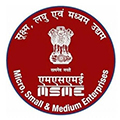Very-large-scale integration (VLSI) Training | VLSI Technology
Arist Automation VLSI (very high-level integration) Training, VLSI is the current standard for computer microchip miniaturization and refers to microchips containing hundreds of thousands of transistors. LSI (large-scale integration) meant microchips containing thousands of transistors. Previously, MSI (intermediate-scale integration) referred to a microchip containing hundreds of transistors, and SSI (low-level integration) referred to dozens of transistors.

What Does VLSI?
VLSI is the process of assembling or embedding hundreds of thousands of transistors into a single silicon semiconductor microchip. VLSI technology was invented in the late 1970s when microchips with advanced computer processors were developed.
VLSI pursues high-level integration technology (LSI), intermediate-level integration (MSI), and low-level integration technology (SSI).
Prior to the introduction of VLSI technology, most ICs had a limited set of tasks they could perform. The electronic circuit may contain CPU, ROM, RAM, and other sensible glue. VLSI allows IC designers to add all of this to a single chip.
The electronics industry has achieved tremendous growth over the past few decades, largely due to the rapid advances in high-tech integration technology and systems design applications. With the advent of massive integration projects (VLSI), the number of applications for integrated circuits (ICs) on high-performance computers, controls, communications, image and video processing, and consumer electronics has been increasing rapidly.
Current state-of-the-art technology such as high-resolution and high-resolution video and mobile connectivity provides end-users with an amazing amount of applications, processing power, and portability. This trend is expected to grow rapidly, which has a significant impact on VLSI construction and system development.
VLSI Technology
Extensive integration is the process of embedding or assembling hundreds of thousands of transistors into a single silicon semiconductor microchip. The invention of VLSI technology began in the late 1970s when high-tech (the computer) microchips were also in their developmental stages. The two most common VLSI devices are a microprocessor and a microcontroller.
VLSI refers to integrated circuit technology that has multiple devices on a single chip. The term derives from, of course, the 1970s, and other limited integration categories based on the number of gates or transistors per IC.
The impressive growth of the electronics industry is due to the technological advancement of large-scale integration. With the advent of VLSI projects, the number of opportunities for ICs to control applications, communications, highly efficient computers, and consumer electronics as a whole continues to increase.
VLSI Design Flow
The project flow of the VLSI IC circuits is shown in the figure below. The various levels of design are numbered and the blocks show processes in the design process.
Details come first, clearly defining, functionality, interface, and the design of the digital IC circuit to be designed.
The definition has been created to analyze the design in terms of performance, functionality, compliance with given standards, and other specifications.
RTL definition is made using HDL. This RTL definition has been modified for performance testing. From here on we need the help of EDA tools.
The definition of RTL is then converted to a gate-level network list using sensible integration tools. Gate level netlist is a circuit description based on the gates and interactions between them, which are designed to meet time, power, and location details.
Y Chart
The Gajski-Kuhn Y chart is a model, which captures considerations in the design of semiconductor devices.
The three domains of the Gajski-Kuhn Y chart are on the radial axis. Each domain can be separated by output levels, using fixed rings.
At the top level (outer ring), we consider the structure of the chip; at lower levels (inner rings), we filter the design sequentially for a more detailed implementation –
Creating a structural definition is achieved through the processes of high-level integration or logical integration.
Design Hierarchy-Structural
Design planning involves the principle of “Divide and Conquer.” It is useless to divide a task into smaller tasks until it reaches its simplest level. This process is very convenient because the final evolution of the design is so simple that its production becomes easier.
We can design a given task at the core of the design flow process. To understand this, let’s take the example of designing a 16-bit adder, as shown in the picture below.
Here, the entire 16-bit adder chip is divided into four 4-bit adder modules. Additionally, split 4 adders into 1-bit adder or half adder. The addition of 1 bit is a simple design process and its internal rotation is also easy to do on the chip. Now, connecting all the last four adders, we can design 4 adders, and move on, we can design a 16-bit adder.




 Previous Post
Previous Post Next Post
Next Post